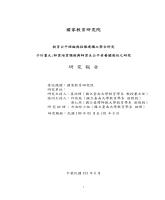| 英文摘要 | Education has been viewed as a crucial means to achieve social emancipatory function because it could help working class children to have upward mobility. However, the perspective of cultural reproduction rejects this equal assumption and points out that the academic performance of working class students tends to be lower than that of middle/upper class counterparts. Relevant researchers argue that the phenomenon of cultural production does not root in production process but education, which contents tend to be academic and, thus, put working class children in a disadvantaged position. Unfortunately, most of primary teachers tend to confine themselves within a narrow scope – instrumental rationality, leading to neglect the interplay among social class, culture and achievement.
Therefore, this study was designed to explore the relation between teacher education and instrumental rationality. In doing data collection, this research employed questionnaire and group-focused interview. The findings show that the curriculum of teacher education addresses the concept of techno-efficiency, leading to shape a psychic-mind of teacher-students. Furthermore, in terms of explaining a mind of instrumental rationality, personal experiences and gender issue need to be taken into account. |

